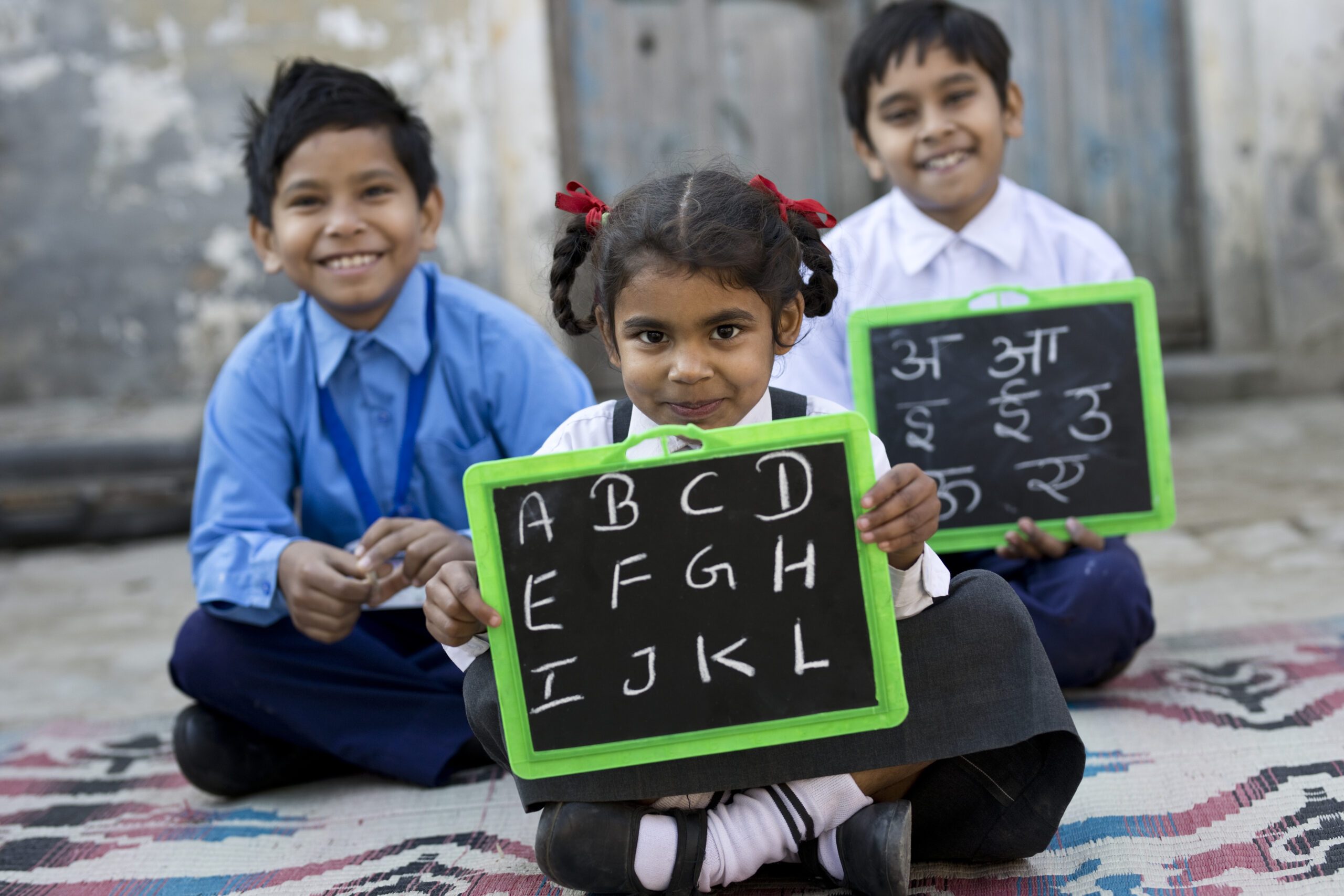Q1. In your view, what have been the key governance enablers contributing to the success of the NIPUN Bharat Mission? Have there been any notable challenges at the state or district levels in ensuring its smooth implementation? If so, what are they?
NEP 2020 was instrumental in bringing the much needed emphasis to foundational literacy and numeracy (FLN) by dedicating a chapter on it, making FLN a cornerstone for all future educational outcomes. This policy direction was made implementable by the Ministry of Education (MoE) by launching the NIPUN Bharat Mission in 2021, which served as a green signal for states to prioritise FLN. A key governance milestone was the integration of FLN into states’ annual work plans and budgets (AWPBs), fostering intentional planning, resource allocation and heightened accountability at both state and district levels.

Education Consultant and Senior Advisor, CSF
Crucial to the mission’s governance architecture are a wide range of stakeholders: national and state education departments, State Council of Educational Research and Training (SCERT) officials, District Institute of Education and Training (DIET) officials, district and block education officers, school leaders, teachers, civil society organisations (CSOs) and development partners. Effective coordination among these actors — across top and middle management — has been instrumental in building systemic capacity, ensuring policy coherence and sustaining momentum for improved learning outcomes in the early grades.
There have been some implementation challenges in governance for data and data systems. These pertain specifically to the reliability of data on student assessments and learning achievements, teacher deployment by each grade level, availability or access to learning materials in classrooms and regular attendance of students and teachers in classrooms. Shortage of teachers leading to multi-grade and multi-level (MGML) classrooms is a real challenge. Teachers are often unable to give dedicated time for instruction and teacher-supported practice to students in each grade.
Children who come to government schools often belong to socio-economically marginal communities who have very little, if any, academic/ educational support at home; they need more time on task at the school. The real time on task is reduced due to chronic absenteeism of students and at times of teachers. There are other systemic challenges such as short duration of the school timing, number of functions and celebrations mandated by the state, shortage of teachers, teachers being on other duties etc. that result in decreasing the learning time for students.
Q2. How can data-driven decision-making improve governance in education and ensure better FLN outcomes?
Good quality data and its use for decision-making can enhance student learning. Findings from the various student learning achievement surveys by State Governments can help in planning and prioritisation of funding, teacher deployment, material development as well as teacher and middle management capacity building. While data on student/teacher attendance can inform planning of the annual calendar to increase time on task for students, insights from classroom observations and mentoring can help in improving teacher professional development (TPD), making classroom practices more effective.
However, while several states have made strides in leveraging data to improve governance in education, more could be done to strengthen these mechanisms to improve learning outcomes. Many Indian states have deployed app-based data systems but effectiveness of these in terms of functionality, timeliness, usage, quality and reliability remains a challenge. Additionally, there are gaps being faced by the field staff on the ground due to improper functioning of mobile applications for monitoring. Lastly, since data is mostly centralised, it leads to fear of reproach from higher authorities, resulting in perverse incentives and inflated data.
To make data truly effective for decision-making in education, a focused two-pronged approach is essential.
First, measure less, but measure what matters. In data governance, what you choose to measure becomes what the system prioritises. When too many indicators are tracked, attention often gets scattered and the core purpose — improving learning — can get lost. Instead, systems must zero in on regularly tracking learning outcomes and the quality of teaching practices including effective use of learning materials. Take Uttar Pradesh’s example: teachers follow a structured 4+1+1 model, where four days are dedicated to instruction, one to assessment and one to targeted remediation based on the assessment data. This sharp focus on assessment data ensures data is not just collected, but used to improve what matters most — student learning.
Second, decentralise not just data collection, but also its interpretation and use. While data is often gathered at the school or sub-district level, analysis and planning frequently remain centralised at the state level — limiting the responsiveness of interventions. Empowering districts and blocks to analyse and act on their own data enables more contextually relevant solutions tailored to local needs. A promising example is Uttar Pradesh’s Vidya Samiksha Kendra (VSK), which has the potential to significantly strengthen real-time data monitoring and decision-making. However, for its full potential to be realised, similar platforms must go beyond central dashboards and actively equip district and block-level teams to interpret data and drive localised planning. When those closest to the problem are also interpreting the data, interventions become faster, more accurate, smarter and more effective.
It has been heartening to observe that a few cluster and block coordinators have used data from classroom observations, formative assessments and spot tests from 15-20 schools to identify specific learning competencies that need more teaching and/or practice time for children.They have also been able to observe that in some instances, sequence of teaching competencies make a difference for children to learn such as teaching all the letters of the alphabet in a sequence of the alphabet, rather than in clusters of letter, or mathematical operations before ensuring that children know the place value of each number. These kinds of insights by the cluster resource coordinators (CRCs) or block resource coordinators (BRCs), avoids blaming the teachers and instead helps teachers to find answers to challenges faced by them.
Q3. What role do nonprofits, policymakers and donors play in strengthening governance for better FLN delivery?
India has a very interesting history in the relationship of donors, policymakers and nonprofits. In Centrally Sponsored Schemes (CSS) of the District Primary Education Programme (DPEP) and Sarva Shiksha Abhiyan (SSA), the contribution from multilateral agencies such as the World Bank, Department for International Development (DFID) and the European Union (EU) were relatively very small as compared to the central government’s spending on education and even more so of the state government budgets on school education. However, the external contribution helped in instituting a system of annual work plan and budget (AWPB) and accountability for the stated outcomes of the programmes. The systems were put in place for the states to submit annual plans and budgets (AWP&B) by district level planning. Once approved, the Centre provided funds in accordance with the approved plans which were substantially supplemented by the states’ contribution to the respective Centrally Sponsored Scheme (CSS). For accountability purposes, a mechanism of the bi-annual Joint Review Missions (JRM) was created. The mission was composed of members from the central government, experts from the nonprofits and academia as well as the donor agencies. The mission visited select states in each bi-annual JRMs and their respective implementation sites such as the schools and the implementing departments, besides examining relevant documents, result frameworks and externally conducted research. Additionally, a rhythm of periodic conduct of the National Achievement Survey (NAS) of student achievements for grades 3, 5 and 8, holds the states and the system accountable.
Above is an example of a three-way partnership at a national level between the Department of Education (DoE), external agencies and nonprofits strengthening the result orientation of effective planning, monitoring and accountability.
At the state level, the role of non-profits and philanthropic partners becomes both nuanced and vital. While education departments bring deep contextual knowledge, nonprofits contribute cross-cutting experience from diverse geographies and innovations. When these complementary strengths come together they can significantly enhance governance and delivery.
Consider Madhya Pradesh as an example – the Rajya Shiksha Kendra partnered with The Education Alliance, Central Square Foundation and Tata Institute of Social Sciences (TISS) to launch the MP NIPUN Professionals Program. Through this initiative, 52 young professionals were embedded within district administrations to support the implementation of the NIPUN Bharat Mission. These professionals brought in fresh energy and capacity — organising structured review meetings, monitoring implementation progress and conducting sample assessments to validate data quality.
Nonprofits, policymakers and donors must converge to build cohesive strategies, aligning resources and policy reforms to strengthen governance mechanisms for effective FLN delivery. Their collaborative efforts are essential to drive scalable, sustainable impact toward a Viksit Bharat.
Q4. Achieving universal FLN by 2027 requires sustained investment. How can education financing and governance frameworks ensure that resources reach where they are most needed?
In India, the education system came under the jurisdiction of the states when the Constitution of India came into effect in 1950. Education was moved from the State List to the Concurrent List of the Indian Constitution through the 42nd constitutional amendment Act in 1976. By then, the States had already established systems and processes of implementing the state school system. Post 1976, the Government of India (GoI) intervened in the education system of the states by Centrally Sponsored Schemes (CSSs) such as the Samagra Shiksha Abhiyan (SSA) and the NIPUN Bharat Mission. These schemes are funded jointly by the Ministry of Education (MoE), the Government of India and the respective state governments based on the approval of the annual work plan and budget (AWPB) of the respective state.
Above system provides opportunities for States to develop a strong planning system that is ground up i.e. based on the needs of the schools, blocks and the districts. This planning must be data-based, especially for student learning achievements, availability and efficacy of the materials, teacher professional development and the accountability system. The planning and budgeting needs to be focused on improving the classroom practices, to provide targeted support for students and teachers wrt learning materials, research and assessments, incentives for teachers, regular attendance of students, tracking of student progress in learning and tech-based support to schools and classrooms.
Besides AWPB, there needs to be a monitoring framework dedicated to the NIPUN Bharat mission at the MoE on a common minimum key performance indicator (KPI) to which all states agree to and report against on a bi-annual basis. Similar and possibly more nuanced sub-KPIs may be built into the state level monitoring framework to be monitored on a quarterly and monthly basis at the state and the district levels, respectively. Besides this, there needs to be an annual student assessment at Grade 2 levels to ensure grade level FLN competencies are acquired by all students. Any shortcoming in student achievements need to be factored into the next annual cycle of planning and budgeting to address these challenges.
Q5. The NIPUN Bharat Mission is a well-structured initiative, but implementation varies across states. Given that we have less than two years left for the NIPUN Bharat deadline (2027), what governance mechanisms should be in place to sustain and build upon the progress made in foundational learning?
The most important step would be to continue the NIPUN Bharat Mission for a minimum of five years. Given that a large percentage of students are not meeting grade-level learning benchmarks, the extension of the mission will continue to focus on FLN.
Several states have established some very good practices that need to be shared widely among all states. These practices include strong learning friendly materials, strengthening teacher professional development via coaching and mentoring systems, data gathering, analysis and usage of data to improve classrooms and other practices, state-wide assessments to understand the health of the FLN system and effectively using findings to improve teaching and learning processes. Regional conferences for sharing best practices, along with their publication, will support awareness and promote wider adoption.
Strong goal setting, planning, budgeting and monitoring can also ensure learning improvement of all FLN students which will pave the way for making Bharat, NIPUN .



